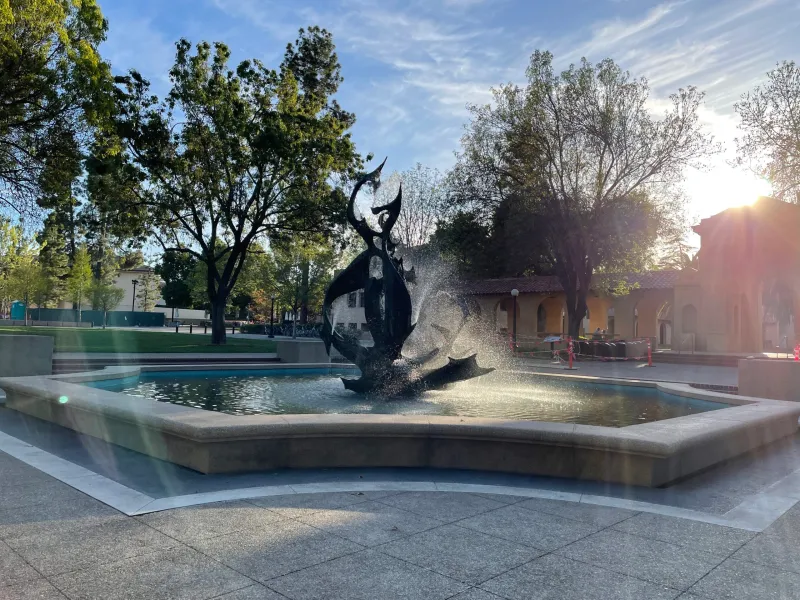There are 25 fountains on campus, prime for the quintessential Stanford pastime of fountain hopping. Donning swimsuits or just rolling up their pant legs, students head to the fountains to splash around, climb the structures or create whirlpools.
Some of the fountains have had a long history, and are more popular among fountain hoppers.
An older fountain is the birdbath-esque Centennial Fountain in front of Green Library’s Bing Wing, which was built in 1928. The spiky green fountain known as the Claw, which is adjacent to White Plaza, was built in 1964. The grand Tanner Fountain, which sits between Memorial Auditorium and Hoover Tower, was built in 1977. Obert Tanner M.A. ’37 and his wife Grace Tanner donated funds to create Tanner Fountain in honor of their son, who died of polio in 1943. Shumway Fountain, or the red hoop fountain in front of Green Library on the Coupa Café side, was built in the 1980s.
In an email to The Daily, University spokesperson Luisa Rapport wrote that Terman Fountain, constructed in 2012, is the largest fountain on campus by total area. This fountain was named after Frederick Terman, a professor of engineering at Stanford. Rapport wrote that the fountains across campus serve as memorials, commemorations of University milestones and public art.
Although the exact date of fountain hopping’s origin is unclear, potentially circa the 1970s and 80s, the fountains have been well-loved by generations of students over the years.
Many students, like Stephanie Unur ’24 M.S. ’25, find fountain hopping to be a cooling reprieve from busy campus life.
“Campus is already such a beautiful place, so having that backdrop while I blast some music and go for a dip with friends is the perfect way to spend a hot spring day,” said Unur, whose favorite fountain is the Tanner Fountain because of the large rim where students may lounge.
Incoming University president Jonathan Levin ’94 also partook in the activity when he was a student. “I most definitely participated in fountain hopping — though not recently,” he wrote. Levin’s favorite fountain is “a close call between the Claw and the red hoop in front of Green.”
In May 2023, Residential and Dining Enterprises (R&DE) even proposed fountain hopping as a way for students to beat the broiling summer heat, since all undergraduate and most graduate student residences do not have air conditioning.
The water used to keep the fountains flowing makes up less than 0.5% of Stanford’s yearly domestic water consumption. This volume translates to around 50,000 gallons to fill the fountains and “several thousand gallons a day to replenish water lost through evaporation, splashing and other factors,” according to the Stanford Report.
Rapport wrote that “fountain maintenance is performed on an ongoing basis with a focus on water quality and conservation, through water treatment, water filtration and mechanical / hardscape repairs.”
According to Rapport, all fountains are maintained to the same quality of a swimming pool. Fountains only require refilling if they have been drained for maintenance or repairs.
The fountains are also key to Big Game traditions. During the week of Big Game, all fountains are dyed a bright red, symbolizing the bloodshed from slaying the University of California, Berkeley’s mascot Oski the Bear. Oski is also impaled atop the Claw.
According to Rapport, “the University works with the Axe Committee to select a dye that can be filtered out without damaging the fountains or wasting water.”
